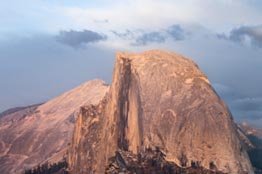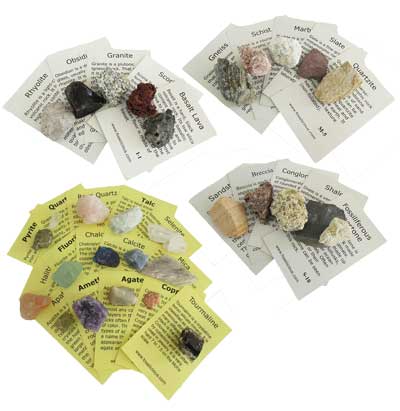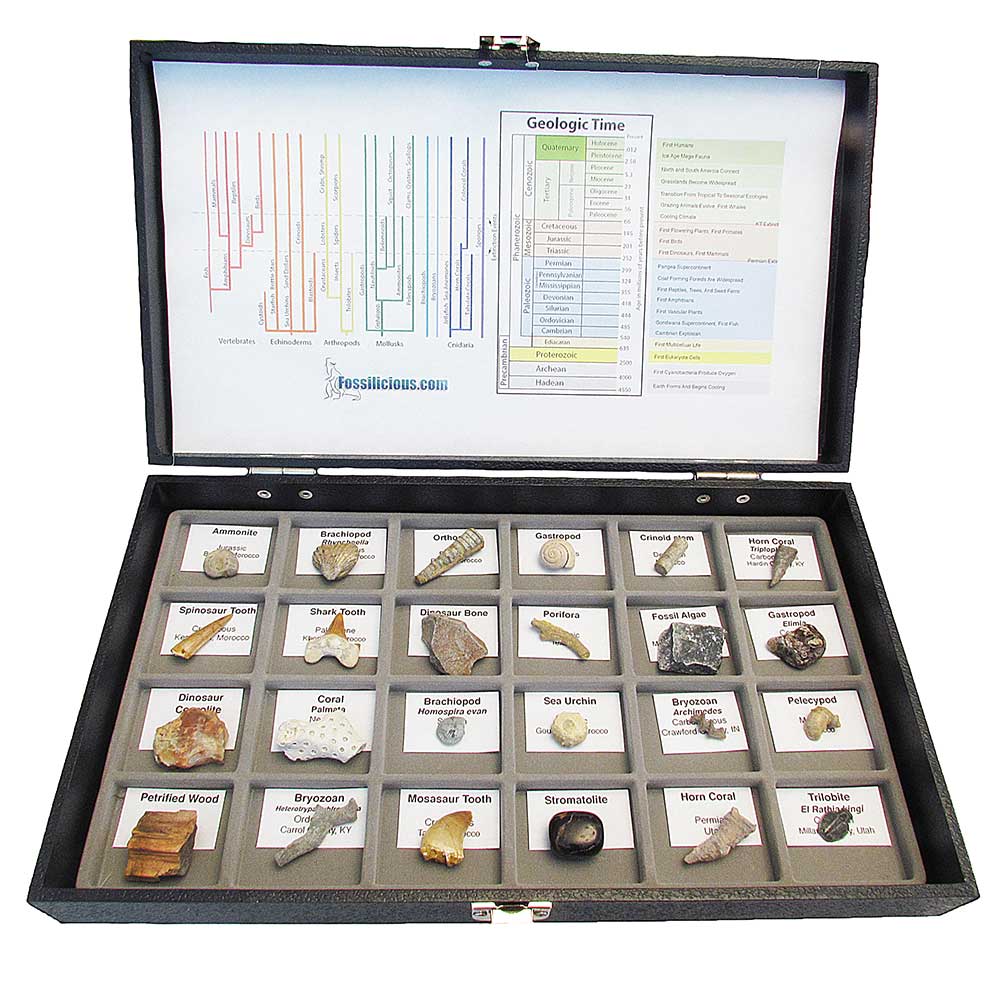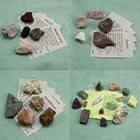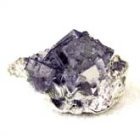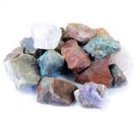Sign up for Lesson Plans, discounts & more!
Granite
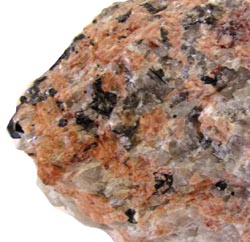
Granite is the most common intrusive plutonic igneous rock. Intrusive means that it has moved into other rocks by force coming up from the mantle. Plutonic means that it is magma that does not reach the surface of the earth and so cools very slowly underground. Because it cools slowly crystals have time to form. Its name comes from the Latin word granum which means “a grain” for the coarse grain crystalline structure of the rock. When the size of the crystals is very large over 1 cm it is called pegmatite.
This rock has made its way into the earth’s crust during all geologic periods. Most of the granite we see today had its origin during Precambrian times.
Granite is made up of quartz, mica, and feldspar. It comes in a wide variety of colors including reds, browns, and many shades of gray from almost black to nearly all white.
There are many types of granite. Which type depends upon the percentages of minerals that make up the rock, especially quartz, alkali feldspar and plagioclase feldspar. The types are given letter designations that generally indicate what kind of parent rock went into the making of the granite. So we could have an I-type granite that was formed from an igneous parent rock, an S-type granite that was formed from sedimentary parent rock or an M-type that is derived from rocks that are from the mantle.
This rock makes up a large part of the continental plates. It is lighter than the basalts of the oceanic plates and so it floats over them. It is the most common bedrock in continental plates.
It is a very hard and durable stone and so it is used in construction as a building stone. It is also used to make floor tiles. Some granites can be polished and make beautiful counter tops and tables. Until the 18 th century granite could only be carved by hand. When steam powered cutting and dressing tool were developed by Alexander MacDonald in Aberdeen, Scotland in 1832 granite became a popular decorative stone. It was used to make head stones in Cemeteries across the United Kingdom. These gravestones were considered to be a status symbol by those in Victorian Britain.
Now it is carved with computer controlled machines or sandblasted using rubber coatings to protect polished surfaces.
Granite is a favorite for rock climbers. Its faces are steep, footings are reliable, and there are extensive crack systems. There are many areas with popular granite faces attracting climbers today like Half Dome in Yosemite National Park pictured here.
Learn More about Igneous Rocks Here.

INTERESTED IN MORE? IF SO, YOU MAY WANT TO CHECK OUT OUR OTHER SITES:
fossilicious.com - Our online fossil and mineral rock shop.
fossils-facts-and-finds.com - An educational site about fossils.

